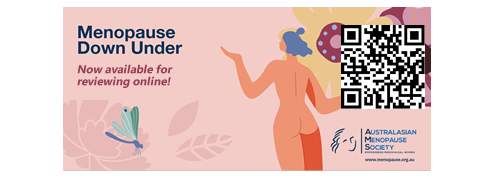Since most women will continue working for years after entering menopause, the effect of menopause symptoms on their working ability is an important issue and the focus of a new study. Among other things, the study suggested that premature menopause can limit a woman’s work ability and time spent in the workforce.
Early menopause is the term used when women undergo menopause early—before the age of 45 years. Approximately 5% to 10% of all women fit into this category. At this point, it is assumed that women have almost 20 years of their working life remaining. However, the menopause transition causes roughly 80% of women to suffer from such bothersome symptoms as hot flashes and night sweats, which can adversely affect a woman’s quality of life.
Menopause (estrogen deficiency) can take a toll on women’s health in other ways as well, including an increased risk of cardiovascular disease and osteoporosis, unfavorable changes in body composition, and musculoskeletal pain. To date, however, few studies have analyzed whether menopause symptoms may be negatively associated with work ability and well-being at work.
A previous UK study showed that menopause before 45 years of age was associated with a ninepercentage-point reduction in labor market participation once these women entered their 50s compared with women who did not experience early menopause.
In this latest study that involved nearly 2,700 Finnish women, researchers investigated how women’s menopause status at 46 years of age was associated with their perceived work ability and registered working life participation during subsequent years. It concluded that an early menopause transition is challenging in that it affects women’s work ability and limits their working life participation.
Based on these results, the researchers recommend that healthcare professionals effectively treat menopause symptoms and promote the overall health of women experiencing early onset menopause so that they continue to be productive in the workforce. Further, they suggest that employers consider making working conditions more flexible for women undergoing the menopause transition to help them manage their symptoms to limit the risk of them prematurely ending their careers.
Abstract
Objective: To study the association between an advanced climacteric status at 46 years of age and current perceived work ability, the consequent 2-year accumulation of disability and unemployment days, and the 7-year incidence of disability pensions.
Methods: Study participants (n = 2,661) were recruited from the Northern Finland Birth Cohort 1966 study's 46-year follow-up in 2012. The participants' perceived work ability was investigated using the Work Ability Score (0-7 = poor vs 8-10 = good), along with potential covariates. Data concerning their consequent disability days, unemployment days, and disability pensions were collected from national registers. The association between their climacteric status at age 46 years, work ability, and working life participation was assessed using regression models.
Results: The climacteric women were more often smokers and more often had a lower level of education. The odds ratio for poor perceived work ability was 1.41 (95% CI, 1.06-1.87), and the incidence rate ratios for disability and unemployment days during the 2-year follow-up were 1.09 (95% CI, 1.07-1.11) and 1.16 (95% CI, 1.14-1.18), respectively, for the climacteric women compared with the preclimacteric women in models adjusted for smoking and education. The 7-year hazard ratio for disability pensions was 1.72 (95% CI, 1.02-2.91) for the climacteric women.
Conclusions: An earlier menopausal transition is associated with poorer perceived work ability, and it predicts lower recorded work participation and a higher disability pension rate in subsequent years.
Climacteric status at age 46 is associated with poorer work ability, lower 2-year participation in working life, and a higher 7-year disability retirement rate: a Northern Finland Birth Cohort 1966 study. Menopause. 2024 Apr 1;31(4):275-281. doi: 10.1097/GME.0000000000002327. Epub 2024 Feb 26.






